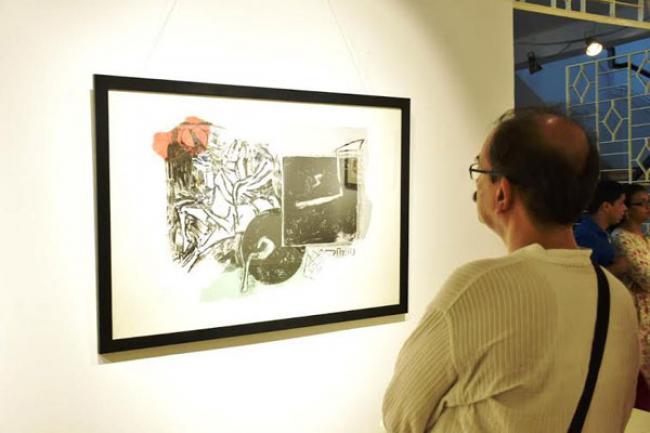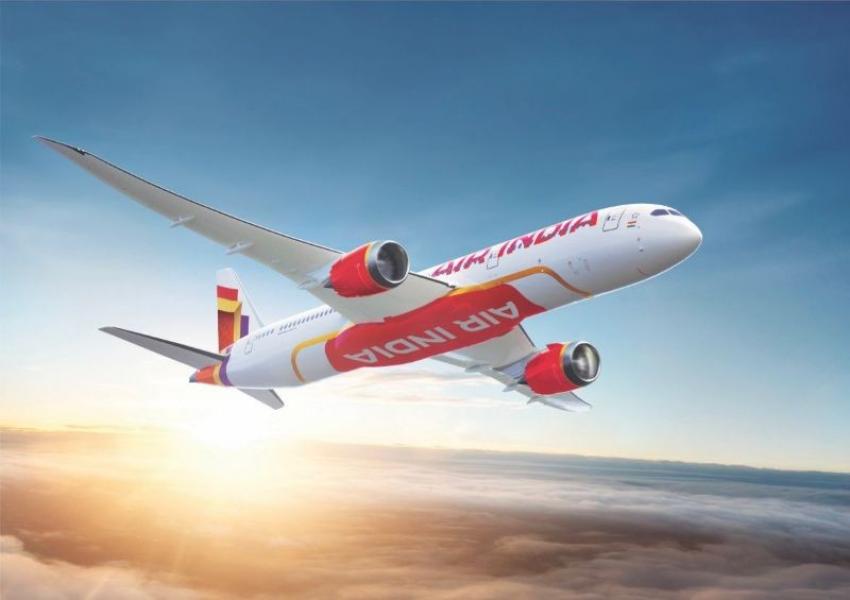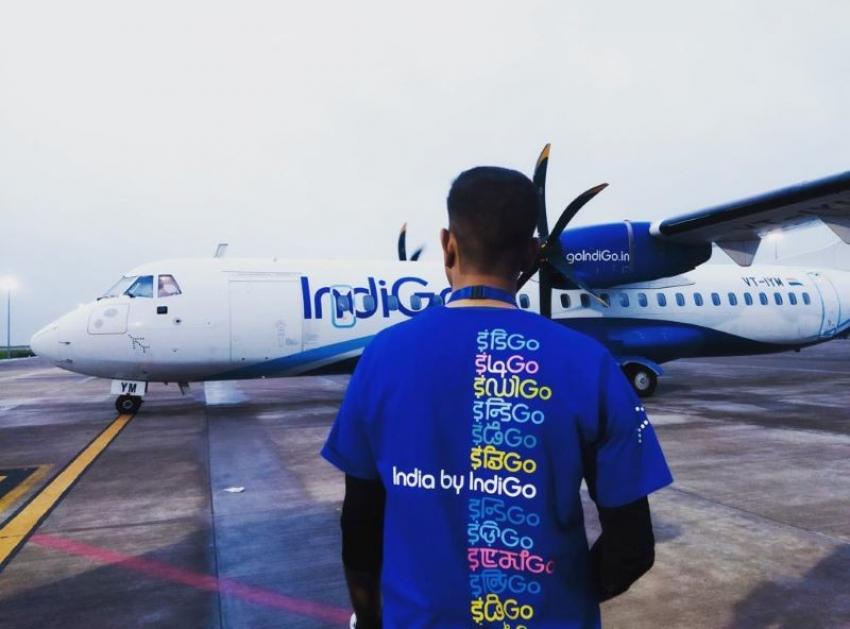27 Apr 2016, 10:53 am

Artist Maqbool Fida Husain was abroad while some of his paintings were being denounced and vandalised at home in India. As Husain was preparing to return home, his friend Arun Relia wanted to know which would be his arrival city. “Husain chose Calcutta,” said Relia. The artist felt Calcutta (as Kolkata was then known ) would be the safest place to wait for the storm to abate, said Relia while speaking at a special five-day event titled ‘Husain 100’ organised in Kolkata recently.
The centenary celebration was organised by Virasat Art, an online contemporary art gallery spearheaded by Ganesh Pratap Singh along with a host of others, including the Government College of Art and Craft, Society of Contemporary Artists, Reflections of Another Day (RAD), Third Eye, Spectrum Artists’ Circle, Young Artists Painter Circle and Calcutta Painters.
The Kolkata celebration also finally put to rest the ghost of a controversy that erupted in the city in 2003. Kolkata-based Galerie 88 had decided to observe Husain’s 88th birthday with an exhibition of 88 of his paintings. But miffed by a comment purportedly made by Husain that most Bengal painters lack stamina and energy, West Bengal’s artist community boycotted the exhibition. Even the then chief minister of West Bengal, Buddhadev Bhattacharya, known for his cultural inclinations, failed to turn up for the scheduled inauguration of the exhibition.
The maverick artist, who eschewed footwear, began his career painting billboards for cinemas and rose to become an iconic artist with a formidable portfolio. His 1956 painting Between the Spider and the Lampwas used for a commemorative stamp by Indian Post; he was called the ‘Picasso of India’ by Forbes magazine; he was awarded Padma Bhushan (1973) and Padma Vibhushan (1991) but was often targeted for hispaintings of Indian goddesses.
But one particular painting, put up for auction by a Chennai-based non-profit, drew the ire of a section of Indians. Though Husain clarified that he had not named the painting as Bharat Mata, they refused to accept hisexplanation. Troubled by constant threats and court cases, Husain finally went into a self-imposed exile and died in Qatar in 2011.
Art historian Geeti Sen reiterated that Husain never named the controversial painting as Bharat Mata; he had executed it as a private work for a buyer. But people refused to listen to Husain when he said that it was somebody else and not he who had named the painting. Sen recalled howHusain occasionally loved to indulge in a little drama but he never belittled any one. Once he had painted a picture of Ma Durga as she is worshipped in Bengal and then covered it with white paint to symbolise the immersion of the idol that takes place on the last day of the festival.
‘Husain 100’ was all about refreshing people’s knowledge about the great artist and an acknowledgement of his contribution to modern Indian art was how Partha Pratim Roy of RAD, who mainly scripted the show, introduced the five-day festival, which included, apart from the exhibition of paintings, a display of books by and on Husain, his posters from the filmGajagamini and others, seminars and lectures on his work and life, and film screening (Vision 20th Century – Paintings by M F Husain).
The exhibition, spread across the three galleries of the Academy of Fine Arts, comprised a wide-range of Husain’s paintings, including those inspired by Kolkata’s icon Mother Teresa and of course, his famous horses. “I have heard so much about Husain and now standing in front ofhis paintings, I am thrilled,” gushed Ahana Mukherjee of Barasat, an aspiring artist. Her friend, Bhaskar Das, was studying the use of colour to convey various moods. “When he makes a woman wear a red sari, it gives her such a subtle look. But when he uses the same red colour as background to the horses, the picture turns grim,” observed Das.
Interpreting Husain is not an easy task, acknowledged renowned scientist P M Bhargava, whose friendship with the artist is well-known. “It’s difficult to talk about Husain. I don’t know where to start,” said Bhargava reminiscing about the artist at the centenary celebration. “Everything about him was unique. He would be involved in a variety of activities but managed to do them differently.”
According to Bhargava, Husain was sparing with his words; he was a keen observer of everything around him but not a slave to them. Like many ofHusain’s ardent fans, he was pained by the artist’s decision to go on self-imposed exile but the artist had little choice as Hindu fundamentalists hounded him.
Husain had vast knowledge about the epics, Ramayana and Mahabharata. “He had more knowledge about the epics than I had,” said Bhargava, adding, “Husain had internalised the content.” Between 1971 and 1990,Husain came out with several series of his Mahabharata paintings. He also painted another series based on the Ramayana.
Many speakers at ‘Husain 100’ described how fast Husain could visualise and paint. Bhargava attributes this to his ‘economy of lines’. “He could express everything in few lines,” he explains.
Once Husain visited the Alimmuddin Street office of the Communist Party of India – Marxist, in Kolkata, recalled art critic, writer and poet Suneet Chopra. He wanted to know what the various newspapers were saying about the Gujarat riots. Then he suddenly got up, pinned a copy of theGanashakti newspaper, the CPM party’s mouthpiece, on the wall and began to paint. That was his way of relieving himself from the stress, said Chopra.
Probably it was Chopra who, through his poem A Conversation withHusain, best expressed what Husain wanted to say –
“…he tells me when we speak of how a
drawing finished in minutes fetches
such a high price, how “each moment of my
seventy five years of life is in it,
so the price they pay is for that..”
Probably, the best compliment to the ‘Husain 100’ came from the artist’s son Mustafa, who said, “My father would have been very happy if he was present here today. After all Kolkata was his favourite city.”
- Birbhum: Sitaramdas Omkarnath Chair at Biswa Bangla Biswavidyalay
- Rotary Club of Calcutta East Central celebrates centenary of iconic actor Santosh Dutta with statue unveiling
- Shiny things by Jinia: A luxury evolution by visionary entrepreneur, healer
- Mystique and Memories: Wiccan Brigade hosts its first Halloween Fest in Kolkata
- Rotary Club of Calcutta Samaritans hosts three-day youth leadership awards program for tribal students in Bakura
- Rotary Club, South Kolkata Vision inaugurate newly developed children's park in Sonarpur
- Akhil Bharat Jaiguru Sampradaya and Omkarnath Mission volunteers care for terminally ill patients at Mahamilan Math hospice
- Bengali couple promoting Indian music and culture among young Americans
- Indi Setu: Wildlife on the Brink: Can We Rewild a Warming World?
- Durga Puja sustainability: One of the oldest awards goes flex-free
Air Canada has introduced a new non-stop route connecting Toronto with Rio de Janeiro, with the first flight landing in the Brazilian city on Friday morning.
Air India, India’s leading global airline, and Maldivian, the national airline of the Maldives, have entered a bilateral interline partnership aimed at boosting connectivity between the two countries.
IndiGo, India’s largest airline, is grappling with one of its most severe operational crises in recent years, with widespread flight delays and cancellations disrupting travel across the country for a second consecutive day.





